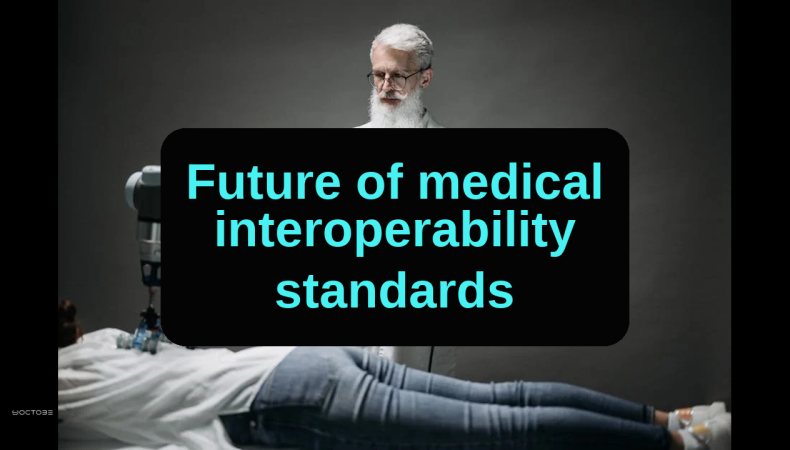The Critical Need for Advanced Interoperability in Healthcare
The healthcare industry stands at a crossroads in digital transformation, where the future of medical interoperability standards will determine the efficiency, safety, and quality of patient care. With the U.S. healthcare system losing over $30 billion annually due to interoperability gaps, the push for next generation healthcare standards has never been more urgent.
Modern healthcare demands systems that can seamlessly exchange and interpret data across:
- Electronic Health Records (EHRs)
- Practice management systems
- Medical devices and IoT health monitors
- Public health reporting systems
- Patient-facing applications
Current State of Medical Interoperability Standards
The evolution of medical data exchange has progressed through several generations of standards:
| Standard | Generation | Key Characteristics |
|---|---|---|
| HL7 v2 | First | Message-based, pipe-delimited format |
| HL7 v3 | Second | XML-based, more structured but complex |
| FHIR | Next-gen | RESTful APIs, modular components |
| CDA | Document | Structured clinical documents |
While these standards have advanced data exchange, most healthcare organizations still struggle with implementation at scale. Only about 50% of hospitals have successfully integrated external health data into their systems, highlighting the gap between standards availability and real-world adoption.
Key Challenges in Healthcare Data Integration
Several persistent barriers hinder the future health information standards from achieving their full potential:
- Data Silos: Proprietary systems and competing vendor interests create fragmented data landscapes
- Semantic Variation: Differing clinical terminologies across systems (SNOMED vs. ICD vs. LOINC)
- Security Concerns: Balancing data accessibility with HIPAA compliance and cybersecurity
- Resource Limitations: Many providers lack IT staff and budget for complex integrations
- Patient Matching: No universal patient identifier makes cross-system matching unreliable
Emerging Technologies Shaping the Future
Several cutting-edge technologies are converging to create the next wave of interoperability solutions:
1. Blockchain for Health Data Exchange
Distributed ledger technology offers:
- Immutable audit trails for data access
- Decentralized identity management
- Smart contracts for automated data sharing rules
2. Artificial Intelligence and NLP
AI enables:
- Automatic translation between coding systems
- Context-aware data mapping
- Predictive analytics using combined datasets
3. Cloud-Native Interoperability Platforms
Modern interoperability engines leverage:
// Example FHIR API call for cloud-based data exchange
GET [base]/Patient/123
Accept: application/fhir+json
Authorization: Bearer {{token}}HL7 FHIR: The Foundation of Next-Gen Standards
Fast Healthcare Interoperability Resources (FHIR) represents the most significant advancement in future health information standards with its:
- RESTful API architecture
- Modular Resources (80+ defined types)
- Support for JSON, XML, and RDF formats
- Built-in extensibility mechanisms
The FHIR standard continues to evolve with new implementation guides and profiles addressing specialty-specific needs from oncology to behavioral health.
The Role of Interoperability Engines in Future Systems
Next-generation interoperability platforms must provide:
- Protocol Translation: Convert between HL7, FHIR, X12, and other formats
- Data Normalization: Map disparate terminologies to common models
- Orchestration: Coordinate workflows across multiple systems
- Monitoring: Track data quality and exchange metrics
These engines increasingly incorporate machine learning to automatically improve mapping accuracy and predict integration needs.
Practical Implementation Strategies
Healthcare organizations can prepare for the future of medical interoperability standards by:
- Assessing Current Capabilities: Audit existing systems and integration points
- Prioritizing Use Cases: Focus on high-impact scenarios like care transitions
- Adopting FHIR Early: Start with read-only APIs before complex writes
- Investing in Staff Training: Develop in-house interoperability expertise
- Participating in HIEs: Join regional health information exchanges
Measuring Success in Interoperability Initiatives
As organizations implement next generation healthcare standards, they should track:
- Data Liquidity Metrics: Volume and velocity of successful exchanges
- Clinical Impact: Reduction in duplicate tests and medication errors
- Operational Efficiency: Time saved in data retrieval and entry
- Patient Satisfaction: Improved care coordination experiences
The evolution of medical data exchange will continue accelerating, with emerging standards incorporating genomics, social determinants of health, and real-world evidence. Organizations that embrace these changes today will lead the healthcare transformation of tomorrow.
Last modified: Mar 25, 2025






